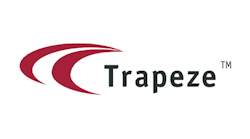State College, Pa.
Ryan Harshbarger
Transportation Analyst
Centre Area Transportation Authority
The Centre Area Transportation Authority (CATA) uses an Avail Technologies' ITS system to provide our Operations Department with real-time and historical data regarding our fleet, ridership statistics and route performance. This system also provides our operators with single point log in, automated headsign and farebox changes, automated stop announcements, real-time passengers on-board count and schedule adherence feedback at timed stops along the route.
The Avail system also comes with a public information component that provides a Web module showing current bus location and estimated departures for every stop in the system. This same module provides an “xml” feed pushing scheduled and estimated departures to wayside signage at three of the most popular stops in our system. This same feed provides information for both our mobile iPhone and Android applications and is provided upon request for development beyond CATA’s offering. This open data approach has led to the development of an additional Android application, the inclusion of our data in the popular OneSchool applications and a generic mobile-friendly website.
In the near future CATA will be providing our riders with trip planning through Google Transit, additional wayside signage deployment and continued support for third-party mobile application development. And in the Operations Department, the next deployment will be on-board surveillance systems with the capability of real-time video streaming to our dispatch office.
Dallas, Texas
Allan Steele
Vice President/Chief Information Officer
Dallas Area Rapid Transit
Technology initiatives at DART fall into four categories: infrastructure; enterprise applications; information management and vehicle information technology.
On the infrastructure side, we are reengineering to reduce costs and improve service. GroupWise email will be replaced with a cloud-based third party-hosted solution, saving more than 50 percent, and our 12 PBX’s will be repurposed into a voice over IP (VoIP) platform. Eighty percent of PCs will be replaced or repurposed as thin clients with applications delivered from terminal servers. With other initiatives, infrastructure costs will be reduced by more than 25 percent.
Our three major enterprise application suites, Lawson, Trapeze and SPEAR, have been brought up to current release levels, and we are in the middle of implementing two more Lawson modules for procurement and contract management. These and our Web-based workflow systems are now up-to-date and stable, reducing maintenance requirements, which permits the reallocation of resources to a new information management program.
At DART there is an increasing demand from managers for better information to manage their business. In particular, by aggregating data from multiple systems in a timely manner with flexible delivery modes, managers will be able to react to situations, inefficiencies and other opportunities in time to make operational adjustments. We are implementing TransitMaster from Trapeze as the application underlying a new radio communications system which will provide a trove of real-time (or close) trip data for operational metrics and analysis. Using business intelligence tools this will be linked to data from other modules to deliver management information routinely and on demand.
Additionally, DART has made strides in delivering information to riders. Using a desktop or mobile browser, riders can receive real time predicted bus arrival time at a stop. Smartphones can be used to locate the nearest DART stop, with a street view, and then show routes at that stop, trip planning and predicted bus or train arrival time. Text capability has been added, using the bus stop ID and short code to extend the arrival prediction service to riders with regular cell phones. DART will also soon implement text messaging for passengers to alert DART Police in the event of a disturbance on the system. Subscriptions to social media sites and email enable direct messages to riders about incidents on their chosen routes.
On the vehicle front, the new radio system will capture and transmit trip data and automate operator log on, block and trip assignment and header signs and announcements. DART is investigating touchless fare collection technology with real-time media validation over cellular data. That communications technology will potentially enable infotainment delivery, Wi-Fi for passengers and an integrated on-board network for multiple sub-systems. DART is working with the city of Dallas to upgrade traffic signals for improved transit priority signaling in the central business district, where there are four light rail stations.





